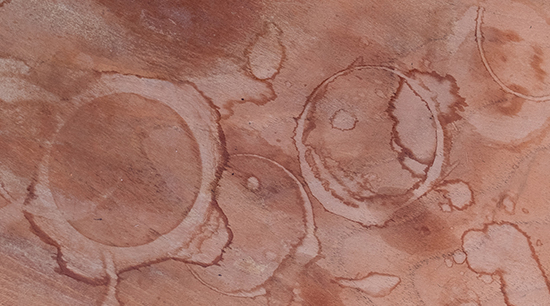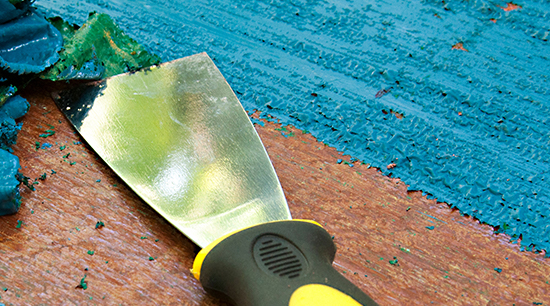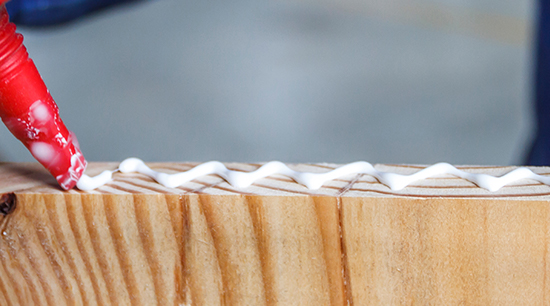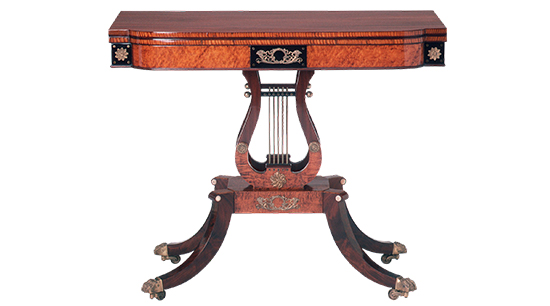How to Repair Water Damage on Wood Furniture
Don’t know whether to trash or repair furniture that was involved in a flood? Knowing how to repair water-damaged wood furniture will help you save money and avoid the need to replace it prematurely.

alpharettawaterdamageremoval.com assembled the following steps and tips for you to repair your water-damaged wood furniture.
How Water Damages Wood Furniture
Wood is an organic material and is highly susceptible to mold and rot when exposed to water or excessive moisture without proper protection. Wood can swell and shift from increased moisture content. Wooden furniture can also get watermarks or stains caused by the wood finish. For example:
- Dark watermarks mean that water has already penetrated the wood finish
- Light marks tell you that the stain is still on the surface
Water Stains on Wood
Most water damage is far from being permanent, and you will find that it’s almost always possible to remove water stains from your wood surface. This all depends on the stain’s intensity and the wood’s condition. Consider the following steps when repairing water-damaged wood furniture:
Dry the Furniture
Remove moisture by letting your affected furniture sit under direct sunlight for 24 hours (minimum). Using artificial means like a hairdryer or blower may only dry the surface, potentially causing more damage. Your furniture should dry slowly and thoroughly. If it dries too quickly or unevenly, the wood can warp, split, break, or move. Take your time and be patient in drying it as naturally and thoroughly as possible to achieve a good result.
Tip: If you cannot get the furniture in direct sunlight, run a dehumidifier along with an air mover to extract the maximum amount of moisture possible.
Strip the Wood’s Finish

Use a paint and varnish stripper to strip any finishing off the wood. Stripping is the simplest way to remove stubborn stains without removing sanding down layers of wood. Use a clean paintbrush to apply the stripper to the affected areas and wait for the chemical agent to oxidize (it will begin to bubble).
Use a scraping tool like a putty knife to scrape the stripper and softened finishing from the furniture. After completely stripping down the furniture, sand the affected area with 100- to 150-grit sandpaper to remove any excess finishing. Then remove any wood dust with a clean paintbrush.
Sand the Wood
A belt sander will do the fastest and cleanest sanding, especially on top of your furniture’s larger flat surfaces, while a smaller finishing sander is ideal for getting an ultra-smooth surface at the end. For an immaculate result, you may want to use these two tools to restore your old wood furniture to a pristine condition.
Tip: Begin sanding with a rough (150) grit, working your way to a fine grit and an ultra-smooth (almost polished) finish.
Glue Loose Joints

Carefully remove any old glue by sanding between the joints with rolled-up or folded 150-grit sandpaper. Remove wood dust and sanded glue with a clean paintbrush. Spread wood glue inside the joint, and reattach the piece, holding it in place with clamps or braces for 12 to 18 hours. Use epoxy wood glue for any hard-to-glue sections like the corners of a dresser, or decorative components that need the reattachment of intricate or delicate, raised wood.
Stain or Paint the Furniture
Use a clean paintbrush to apply waterproof stain (be sure to match the color with the rest of the furniture piece), apply it in broad, even strokes with your paintbrush, then remove any excess stain with a clean shop rag. If you’re painting the furniture, use latex enamel-based paint. Apply two coats of stain or paint. Always let the first coat completely dry before applying the second.
Varnish Your Furniture
If you choose to finish your furniture without stain or paint, you can use a clear, waterproof, and insect-repellent varnish. After the furniture is dry, apply two coats of varnish with a clean paintbrush, letting the first coat completely dry before applying the second one.
Tip: The first coat is dry when it no longer has a tacky or sticky feel. Applying the second coat before drying the first will trap moisture between the layers which may take months or even years to completely dry.
Seek Professional Restoration
If such a project falls within your skillset, you can do this DIY fix and apply these suggestions and tips to beautifully restoring your water-damaged furniture, but in some cases, the work may be too hard or complicated to handle yourself. If the water damage in your wooden furniture is beyond your skillset, seek professional help to restore your cherished furniture.
Some companies offer professional water damage repair and restoration services. Professionals in this field are comprehensively trained in the correct restoration processes when repairing and identifying other damage.
Hiring a professional water damage removal company can save both time and money by combining expertise, up-to-date equipment, and the required tools.

Water-Damaged Wood Furniture
In this article, you discovered easy DIY steps and pro tips on how to repair water-damaged wood furniture.
Knowing how to repair water-damaged wood furniture will help you avoid prematurely tossing it out and spending your time and money trying to replace it.
Not knowing whether to, or how to restore furniture that was in a flood can leave you unsettled or with molding furniture.
Sources:
si.edu/mci/english/learn_more/taking_care/coatings.html
digitalcommons.usu.edu/cgi/viewcontent.cgi?article=1505&context=extension_histall
(678) 505-0266
The post How to Repair Water Damage on Wood Furniture appeared first on http://www.alpharettawaterdamageremoval.com

Comments
Post a Comment